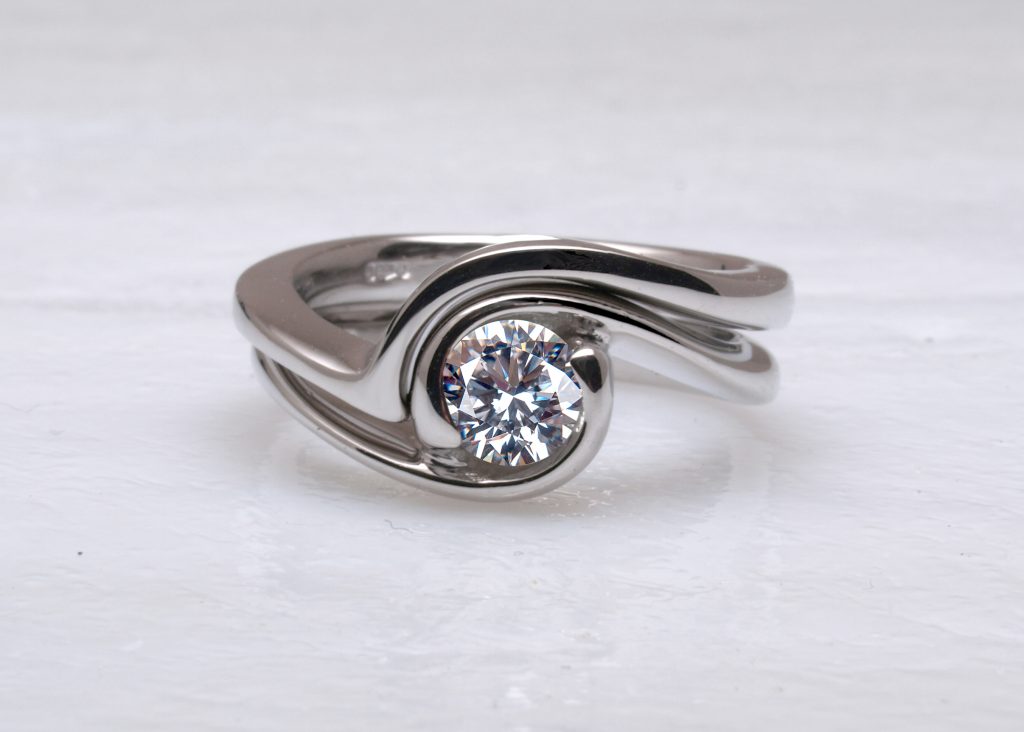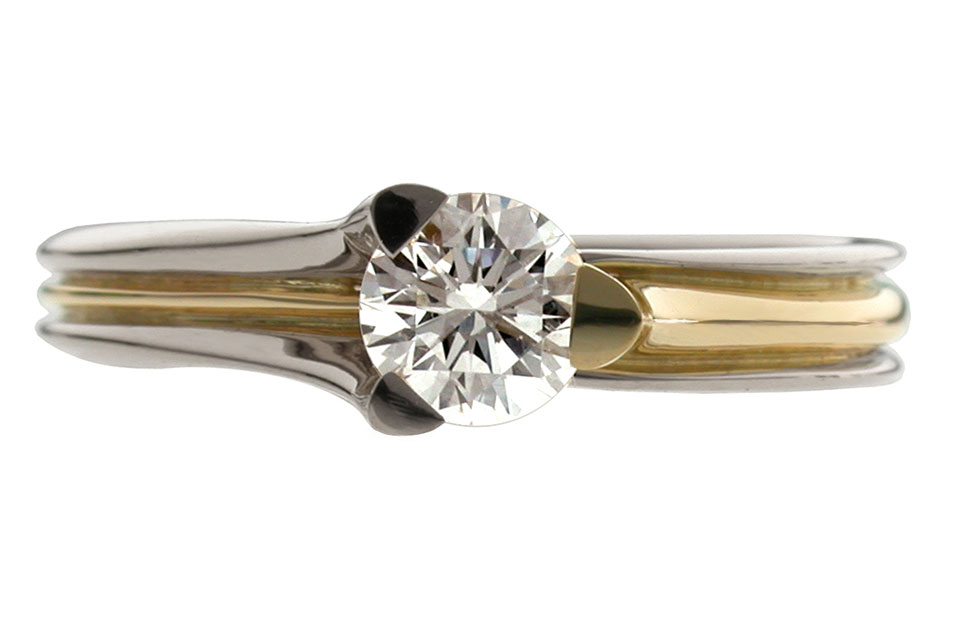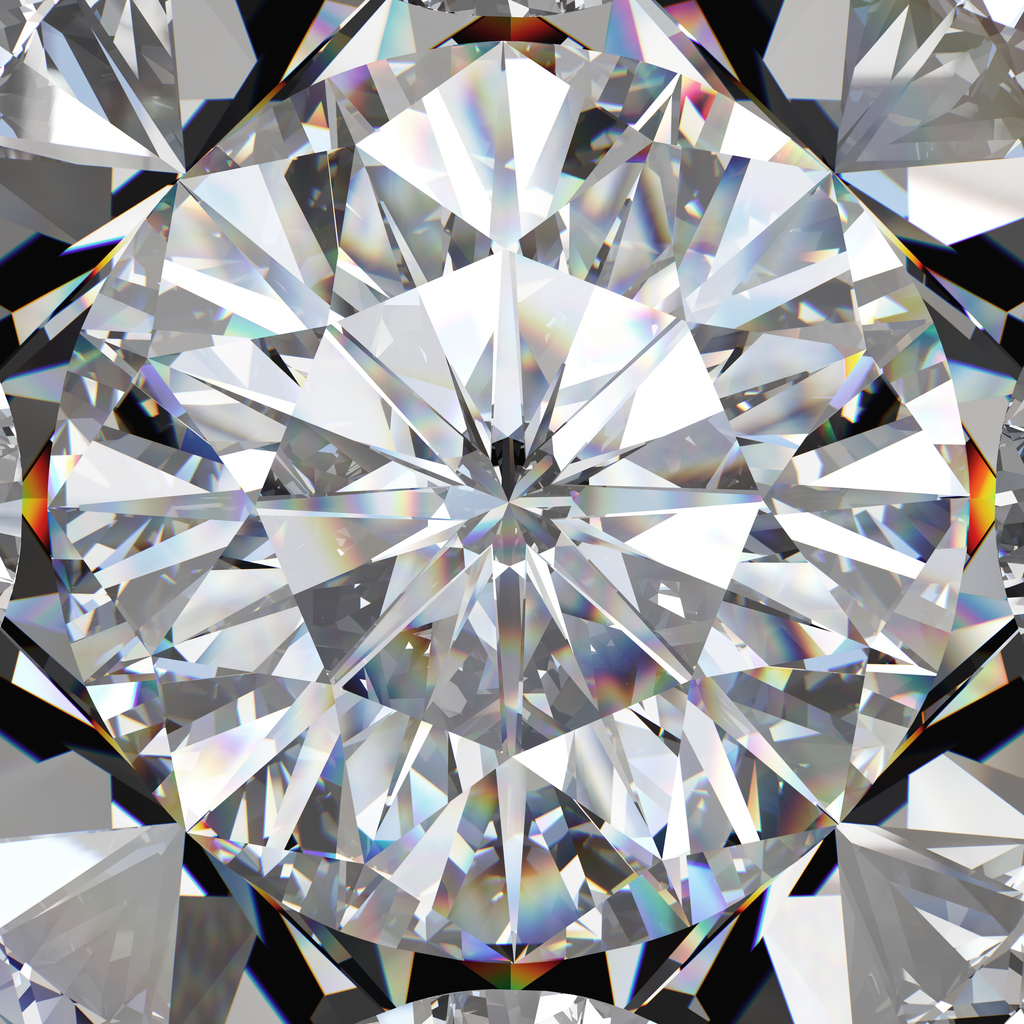Diamonds

There are two approaches to diamond jewellery: The traditional approach is to find a great diamond or perhaps a stone that has been passed down through the family, and then try to work out a way to wire it onto a finger. This led to the kind of minimal setting that has become the classic solitaire in which the stone is held high and there is as little gold work showing as possible. In this style the stone is all.
The second approach, and perhaps the more modern one, is to use a stone to enhance a beautiful design. In this case it is the piece of jewellery itself that is the focus and the stone is a part of the impact rather than being the whole point of the piece. A glance at the work on this site will tell you that I favour
the second approach and so my attitude to diamonds is that they should look great to the naked eye and enhance the beauty of the piece rather than be of the highest possible intrinsic value.
These principles inform the kind of stones that I choose for the majority of my range although there are still pieces, notably those that use larger stones, in which the size and quality of the diamond are central to the design and, for these, I select stones of a higher quality.
Diamond Grading
De beers (bless ’em) rule the world of diamonds. For years now they have been promoting the ‘Four C’s’ as a basic concept of diamond grading. Although it neglects many important aspects of diamond quality, it’s still useful in a sort of ‘rule of thumb’ way and so I’ve adopted it here to give you a feel of what to look for.
The Four Cs are: Carat, Colour, Cut and Clarity.
Carat

Stone weights are measured in carats with 100 points making one carat. A stone could be described as 0.25ct, 25 points or 1
/4 carat; they all mean the same thing. You need to be aware that, because of the relationship between volume and diameter, a stone that weighs twice as much as another one will not look twice as big. Have a look at the table and you’ll see that you have to add nearly 70pts to go from 3mm (10pt) to 6mm (78pt) or to put it another way, to double the size you have to multiply the weight by eight. (Ouch!)
Colour
Colour, I would say, is perhaps the most important factor that bears upon the appearance of a stone. Diamonds can be anything from a brilliant, hard white to pitch black with every shade of colour in between.
The colour is graded by letter with the very best stones in the D-F range, passing to yellow stones at the other end of the alphabet. Anything beyond Z is considered a ‘Fancy’ colour. You can read more about these here.



Cut
The shape of a stone is critical to how the stone performs. Diamond is an amazing material as, not only is it the hardest material known to man, but it also has a very high refractive index. This means that light coming into the stone is bent to a degree that makes it possible to bounce it around and send it back out of the top of the stone rather than just zipping straight through as it would with a piece of glass.
To achieve this, though, the shape, or ‘make’ of the stone must be just right in order to direct the maximum amount of light back out through the crown of the stone.
The term used to describe the amount of light that makes it back to the eye is ‘Brilliance’. If a stone is cut too shallow or too deep then light is lost through the bottom or ‘pavilion’ of the stone and the brilliance is diminished.
You can read more about the different cuts and shapes of diamonds on my Moonrise page.

Clarity
Natural stones contain small imperfections called inclusions. These are either little bits of carbons that contaminated the diamond crystal as it formed, or small tears and fissures in the crystal lattice. They show up as anything from large dark or white blobs to tiny specks that can only be seen under high magnification.
How big but also where the inclusions are dictate the value and appearance of a stone.
If they fall within the table facet (the large flat surface on the top of the stone) then they mar the appearance much more than if they are lost in the facets around the edge or ‘girdle’ of the stone where there is so much dancing light that they are hidden.
You should think of clarity in two ways: There are basically good ‘clean’ stones that have small inclusions in them, and then there are stones that have a haze of tiny inclusions that cannot be seen with the naked eye but which reduce the performance of the stone in the same way that light is reduced as it passes through a dirty window. This means that sometimes a stone will be graded as vvs (very, very, small inclusions) but will look lifeless next to a stone with much larger inclusions and a poorer grading.
This, of course, makes it a bit tricky and shows where a simple grading system can let you down. It’s best, where possible, to see and compare stones rather than just relying on the documentation or to trust your friendly personal jeweller to make an informed choice on your behalf!
The table below shows the standard grades used for clarity.


For my standard ranges I would tend to choose stones in the ‘vs’ range as, if you can’t see it then why pay more for a stone that doesn’t have it! For larger stones, particularly, I tend to make a decision based on the overall performance of the stone and, once in a while, there are bargains to be had by buying stones that are beautiful with exceptional brilliance but are graded down because of a large inclusion near the girdle.
There are other issues relating to clarity, particularly drilling and fissure filling. Click here for more information on so called “diamond enhancement“.
Conclusion (the 5th C)
For my money (and yours!) colour and cut are the most important. I want the piece of jewellery to look stunning to the naked eye and to be affordable rather than making you something that can only be appreciated through a jeweller’s eyeglass. There are times when you will want a very special stone and want to know that you have the best and I can arrange this if you contact me directly, but for the jewellery that I supply through this site you will receive what I consider to be the very best balance of quality and price for each individual piece.

